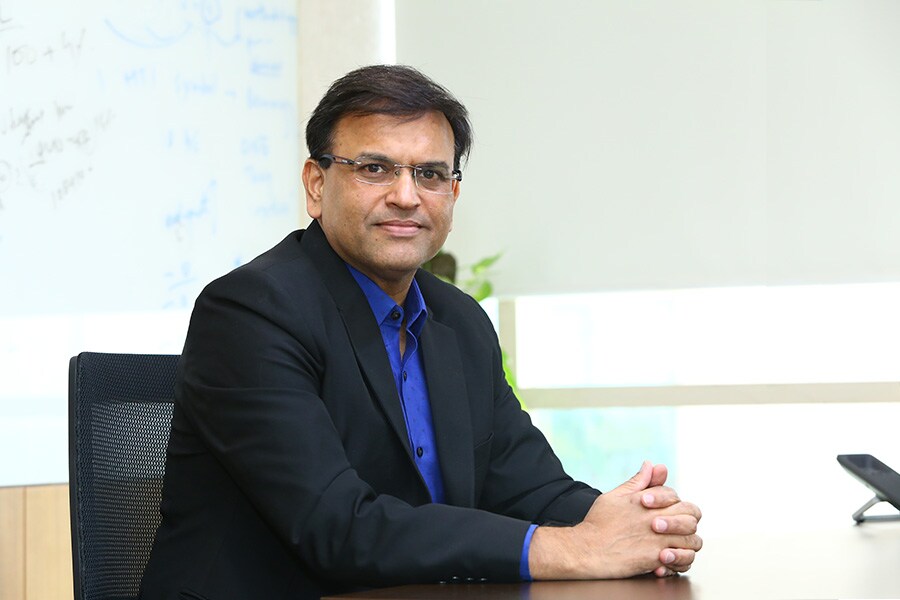
Technology should be built keeping humans in mind': MediaTek's Anku Jain
Jain, the managing director of the ubiquitous chip maker, speaks about the potential of 5G and the millennial market in India
 Anku Jain
Anku JainMediaTek, the world’s fourth-largest fabless semiconductor company, has been bullish on its India operations. Headquartered out of Taiwan, the chipset maker powers over 1.5 billion devices a year across some of the world’s leading brands such as Oppo, Vivo, Samsung and Xiaomi. An industry report released last year by techARC said that 42.2 percent of smartphone models launched in India were powered by MediaTek chipsets. “Our performance has been strong and steady,” says Anku Jain, the company’s managing director, adding that while India has not seen the full impact of coronavirus yet, it will have to be watched. Edited excerpts from an interview with Forbes India:
Q. Over the last few years, you have been aggressive in your India operations…
India is an important market for MediaTek. The country allows us to innovate and offer upgraded products and services constantly. The Indian market is growing exponentially, across sectors, and we are gearing up to meet demand. India is very competitive, and manufacturers are striving to create feature-rich products at affordable prices. Our performance has been strong and steady, and we look forward to newer associations as we grow in the country.
Q. What are the top reasons for your success in Indian?
The primary reason for our success in India, and globally, is the fact that all MediaTek products are built keeping humans in mind. We firmly believe that great technology should be available and accessible to all. We constantly take consumer feedback into account and work towards making the chipset better in terms of speed, quality, safety, and security. As a company working on cutting edge technologies, MediaTek in India has been able to attract the best of the best minds, as we offer them a platform to innovate and ideate.
Q. Tell us about your research and development units…
We have two major R&D facilities in India, in Noida and Bengaluru. In India, our main research is in communication technology, semiconductor back-end and customer support for embedded and mobile devices. Aiming to cater to our global customer profile, we are diversifying our engineering talent beyond mobile communications to connectivity and home entertainment sectors.
Several device makers in India have taken our assistance to develop high-tech products. Our Indian design centres are armed with a strong understanding of the booming integrated circuit (IC) design industry and we are constantly striving to empower India by leveraging growth opportunities in emerging technologies.
Q. How do you see 5G playing out in the country?
We are looking forward to industrial disruption enabled by 5G. We have already launched MediaTek’s fast and smart 5G ‘Dimensity SoC’ family, and are working in coordination with cellular operators, device makers and suppliers. Developed countries like the US, Japan, China and South Korea have already advanced in this direction.
We are planning on bringing 5G connectivity to consumers in India sooner, by focusing on the sub6GHz frequency band, which is highly efficient in both urban and rural areas, and to make it accessible in sectors ranging from mobile to home and auto.
Q. So how does a chip company target millennials?
We have a vibrant set of offerings powered by MediaTek, from smart speakers to set-top boxes. Many new products featuring MediaTek chipsets will be launched in 2020. When you look at the market, millennials are the segment who upgrade their smartphones regularly. They look for feature-rich devices that cater to their specific requirements, while also being pocket-friendly. Our chipsets, be it the recently launched MediaTek Helio G70 and G80 or the MediaTek Helio P series chipsets, are created keeping this trend in mind. The MediaTek Helio series is focused on enhancing gaming capabilities and AI-enabled cameras, for instance.
Q. What do you think went wrong with Indian handset players? Can they make a comeback?
We cannot comment on individual companies, but the fact is that in India, there is a huge opportunity in mobile phones, white goods, automobiles, financial services and security-related sectors.





